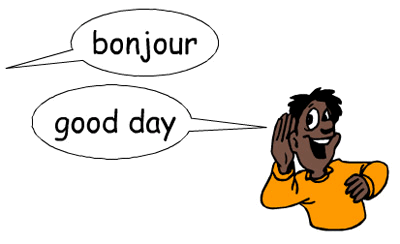Introductory Concepts
Lesson 1: Introduction
9 Topics
Lesson 2: Mediated Reinforcement
16 Topics
Lesson 3: Verbal Behavior
11 Topics
Lesson 5: Verbal Stimulus
8 Topics
Lesson 6: Establishing Operation
15 Topics
Lesson 7: Point-to-Point Correspondence
11 Topics
Lesson 8: Response Product
8 Topics
Lesson 9: Formal Similarity
9 Topics
Elementary Relationships
Lesson 11: Echoic Behavior
8 Topics
Lesson 12: Copying a Text
7 Topics
Lesson 13: Taking Dictation
8 Topics
Lesson 14: Textual Behavior
9 Topics
Lesson 16: The Intraverbal
11 Topics
Lesson 17: The Tact
11 Topics
Lesson 18: The Mand
12 Topics
Lesson 20: The Audience
15 Topics
Extensions of Verbal Behavior
Lesson 22: Stimulus Features
13 Topics
Lesson 24: Generic Extension
9 Topics
Lesson 25: Metaphorical Extension
8 Topics
Lesson 26: Metonymical Extension
8 Topics
Lesson 27: Mand Extension
7 Topics
Lesson 28: Private Stimuli
9 Topics
Lesson 29: Public Accompaniment
6 Topics
Lesson 30: Collateral Response
5 Topics
Lesson 31: Common Properties
4 Topics
Lesson 32: Response Reduction
6 Topics
Multiple Controlling Relationships
Lesson 34: Multiple Responses
6 Topics
Lesson 36: Supplementary Stimulation
8 Topics
Lesson 37: Prompt-Probe
9 Topics
Lesson 39: Fragmentary Recombination
5 Topics
Lesson 43: Main Thematic Source
6 Topics
Building on the Elementary Relationships
Lesson 45: Secondary Verbal Behavior
23 Topics
Lesson 46: The Autoclitic Tact
14 Topics
Lesson 47: The Autoclitic Mand
9 Topics
Text of An Introduction to Verbal Behavior © 1978-2024 Norman Peterson, Ph.D. Graphics and other media elements of An Introduction to Verbal Behavior is © 2010-2024 FoxyLearning LLC and distributed under CC BY-NC-SA




; 16.8 Intraverbal Example #4
This is the open-access version of this module and your progress is not tracked or recorded
When you first begin learning a foreign language, most of your behavior is intraverbal. The English “good day” evokes the French “bonjour” and vice versa. Some critics have claimed that the examples of intraverbals you have just read represent trivial language behavior. While it is true that many intraverbal relationships are “trivial,” much of our learning is in the form of definitions, instructions, and associations that are also intraverbal.
Intraverbal
A form of verbal behavior with the following features:
A verbal response
The prior controlling variable is a verbal stimulus
There is NO point-to-point correspondence between the stimulus and the response
Post a comment
This section is for the civil and public discussion of the content of this page. We reserve the right to moderate and remove comments that are irrelevant, disrespectful, hateful, harassing, threatening, or spamlike. If you are experiencing a technical issue, please contact our helpdesk for assistance.
